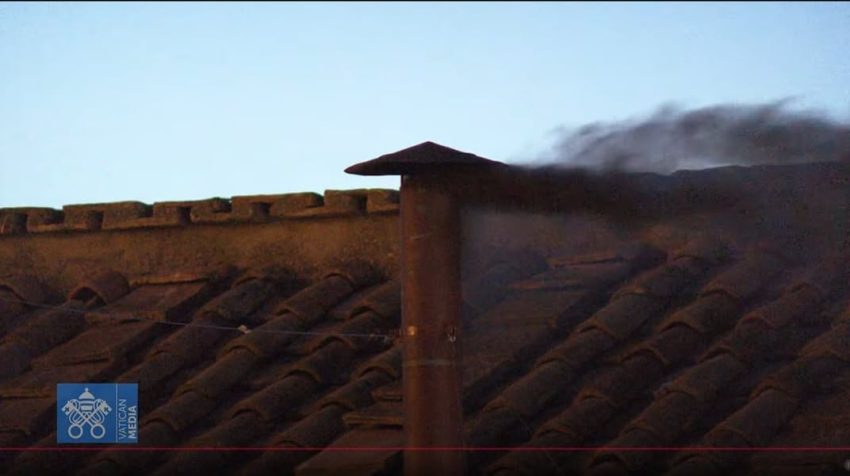VATICAN CITY — A thick plume of black smoke billowed from the chimney atop the Sistine Chapel today, signaling to the world that the first round of voting in the Papal Conclave has concluded without the election of a new pope. The ancient ritual, watched closely by Catholics and curious observers around the globe, marks a solemn and momentous moment in the life of the Church — and today’s outcome reaffirms the gravity of the task before the College of Cardinals.
Shortly after 7:00 p.m. local time, all eyes turned to the copper chimney affixed to the chapel’s roof, where the unmistakable smoke emerged — dark, opaque, and unmistakably black. The crowd gathered in St. Peter’s Square, which had swelled throughout the afternoon in anticipation, gave a collective sigh as the traditional signal confirmed that no candidate had received the necessary two-thirds majority required to become the 267th pope of the Roman Catholic Church.
The conclave, which officially began earlier today behind the sealed doors of the Sistine Chapel, is being attended by 115 cardinal-electors from across the globe, each under the age of 80. Sworn to secrecy under pain of excommunication, they are charged with an enormous responsibility: to discern through prayer and deliberation who among them is best suited to lead the Church through one of the most challenging and transformative periods in recent history.
The sight of black smoke is a powerful visual message rooted in centuries of tradition. The burning of the ballots, treated with chemicals to produce either black or white smoke, is the only sanctioned method of communicating with the outside world during the conclave. White smoke, along with the pealing of the bells of St. Peter’s Basilica, will ultimately herald the successful election of a new pontiff — but today, the Church remains in a state of sede vacante, the period between popes.
Speculation has swirled in recent weeks over who may be chosen to succeed the previous pope, whose resignation (or death, depending on the context) left the seat of Peter vacant. A diverse and accomplished group of cardinals, hailing from every inhabited continent, bring with them differing theological emphases, regional concerns, and visions for the future of the Catholic Church. Issues such as global inequality, internal reform, secularization, and interfaith relations are all believed to be shaping the debates behind closed doors.
While the process is deeply spiritual, it is also human — with personalities, alliances, and long histories playing a role in each deliberation. History has shown that conclaves can resolve quickly, or stretch over several days or more, depending on the unity — or lack thereof — among the electors.
As darkness falls over Rome and the faithful await news of the next voting session tomorrow, pilgrims and tourists alike remain in the square, praying, singing hymns, and reflecting on the historic weight of the moment.
The world now turns back toward the Sistine Chapel, where frescoes by Michelangelo watch silently over a decision that will shape the Church’s future for years, if not decades, to come.
Will you be following the developments of the conclave closely?

